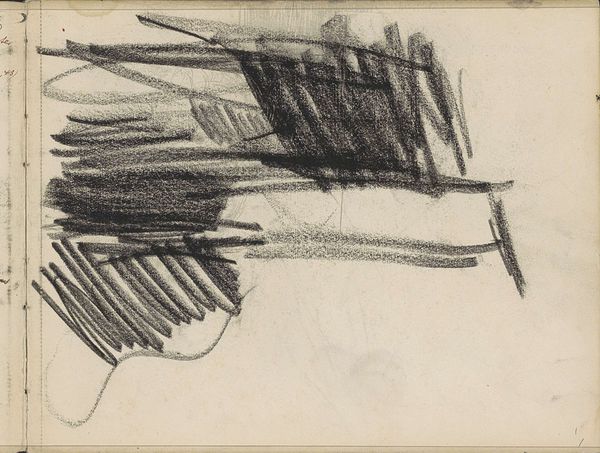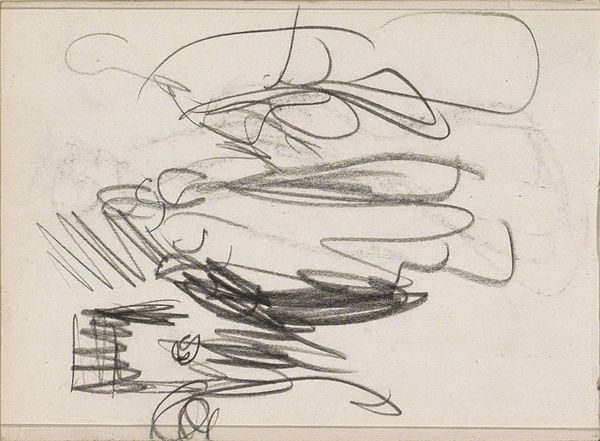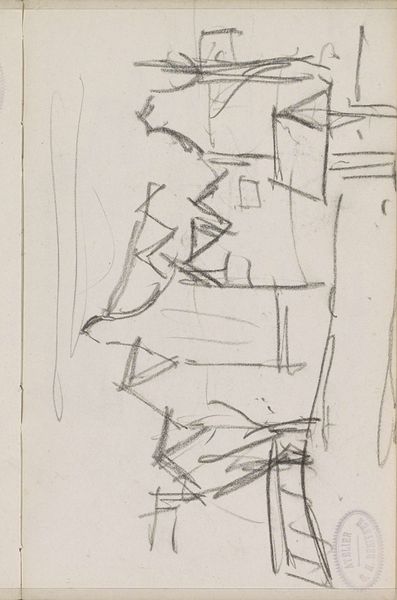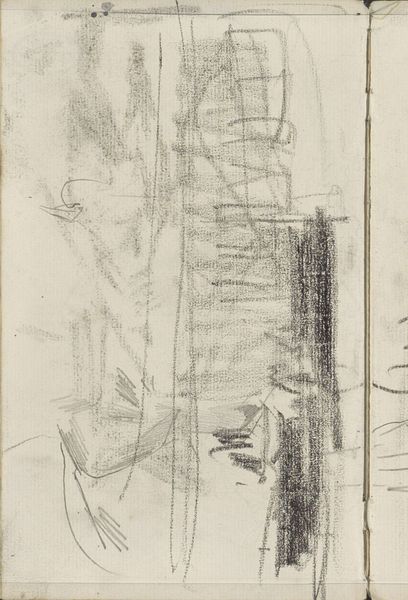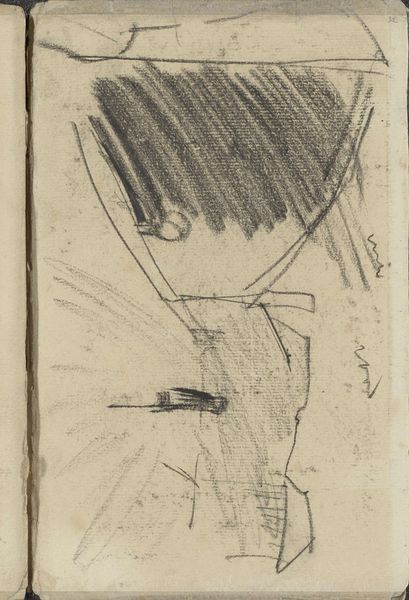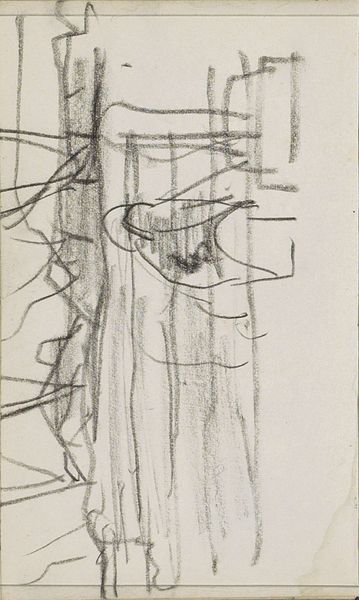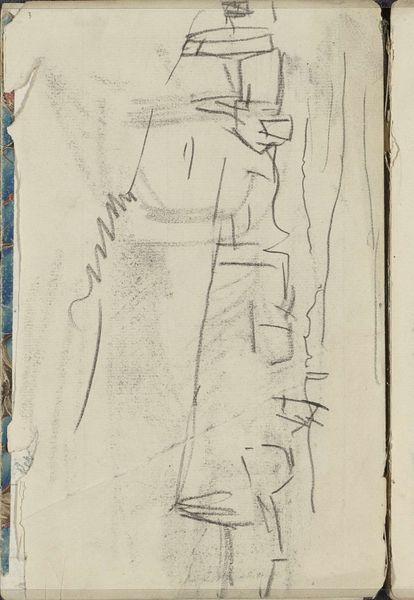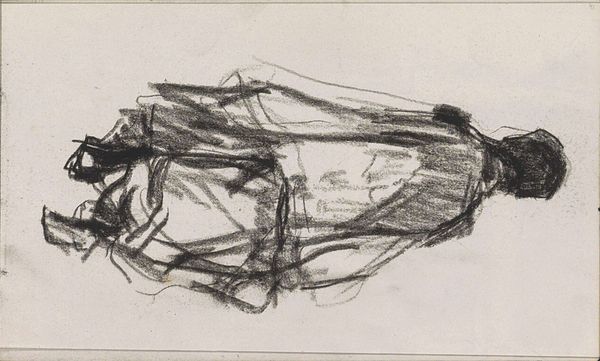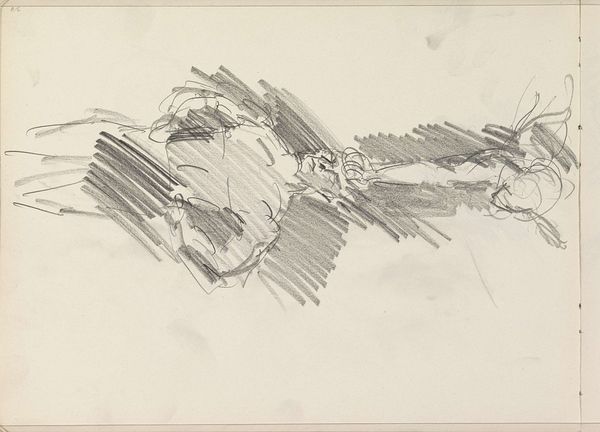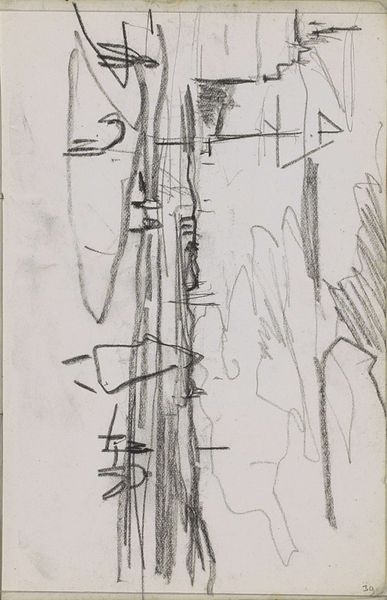
Copyright: Rijks Museum: Open Domain
Curator: Before us we have a graphite and pencil sketch titled "Dienstmeisje op een trapleer," or "Maid on a Stepladder" by Isaac Israels, dating from approximately 1886 to 1903. It's currently held at the Rijksmuseum. Editor: There’s something unfinished, yet strikingly immediate, about this composition. The large dark area to the left anchors the sketch, while the ladder and figure seem almost ephemeral, hovering in the negative space. Curator: That initial impression is intriguing given the period's socio-economic dynamics. Israels, part of the Amsterdam Impressionism movement, often depicted scenes of everyday life. This work offers a window into the lives of working-class women, situating their labor within the domestic sphere. It suggests a need to understand the representation of labor and gender through a contemporary lens. Editor: I agree, the theme offers a crucial social insight, but first consider the work's formal qualities. Notice how Israels utilizes line weight to suggest form, yet refuses to fully commit to any concrete image. The contrast between the dense graphite scribble on the left and the light sketch of the figure and ladder demonstrates a compelling formal dynamic, one that highlights abstraction and figuration in the same space. Curator: The abstraction is definitely noteworthy. And considering feminist theory, we might also view the fragmented portrayal of the maid as reflecting her fragmented social and economic power, where she remains confined to repetitive, unseen labour, literally in the background of bourgeois society. Editor: Or perhaps, in less sociological terms, that these swift, unedited marks are not political at all, but purely for capturing the fugitive transience of daily visual phenomena, that very thing the Impressionists, like Israels, strived to capture in his paintings. It's like seeing him in the act of thinking. Curator: Perhaps. Yet it’s hard to disassociate this 'transience' from the lived reality of the subject herself, whose economic insecurity renders her existence itself 'transient', replaceable. Editor: So while my impulse is toward form, yours is for historical context; I wonder, maybe a perfect understanding lies somewhere in the productive friction between both viewpoints. Curator: I concur. It seems this modest pencil sketch offers a poignant intersection of artistic form and pressing social issues.
Comments
No comments
Be the first to comment and join the conversation on the ultimate creative platform.

